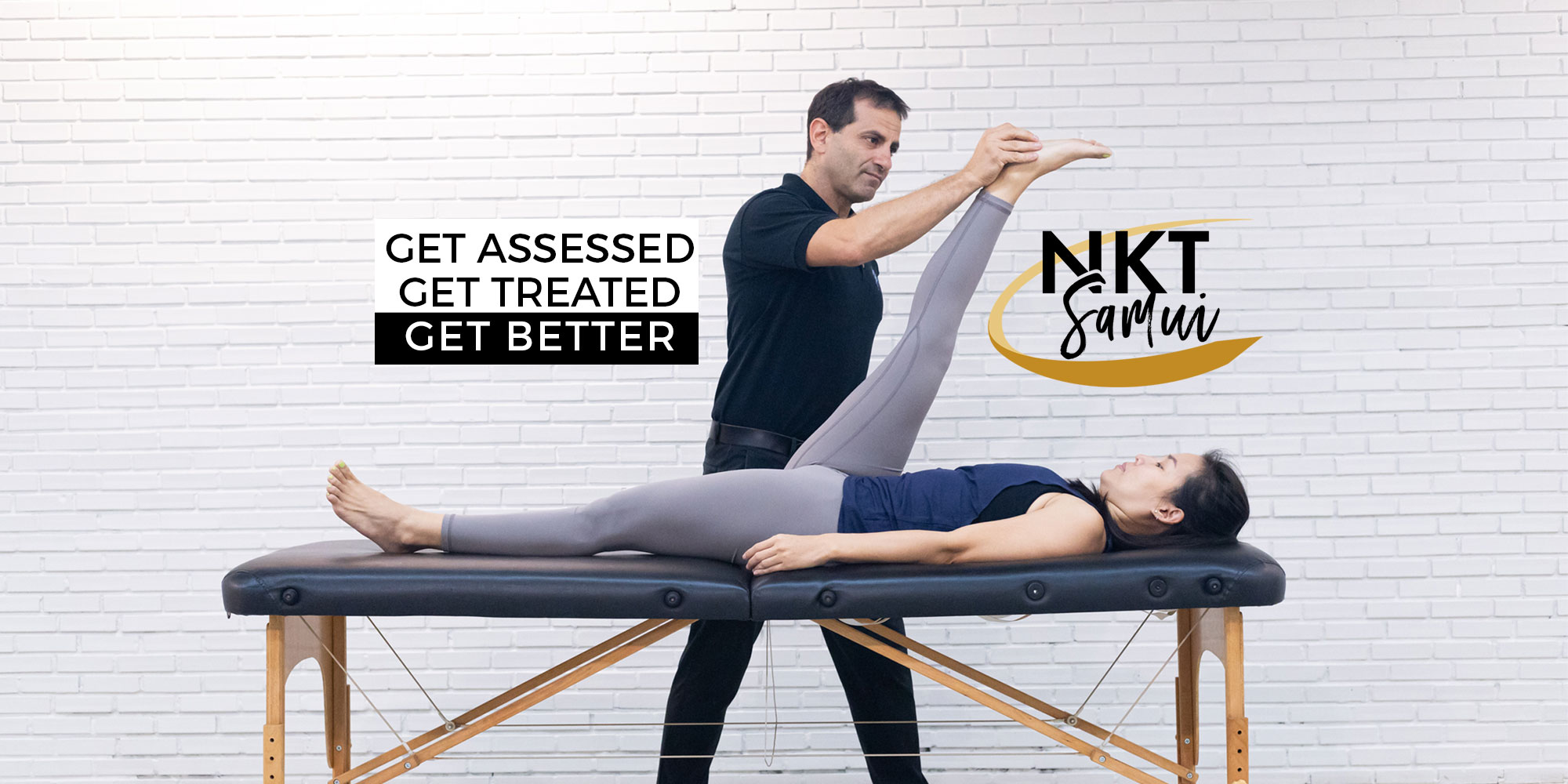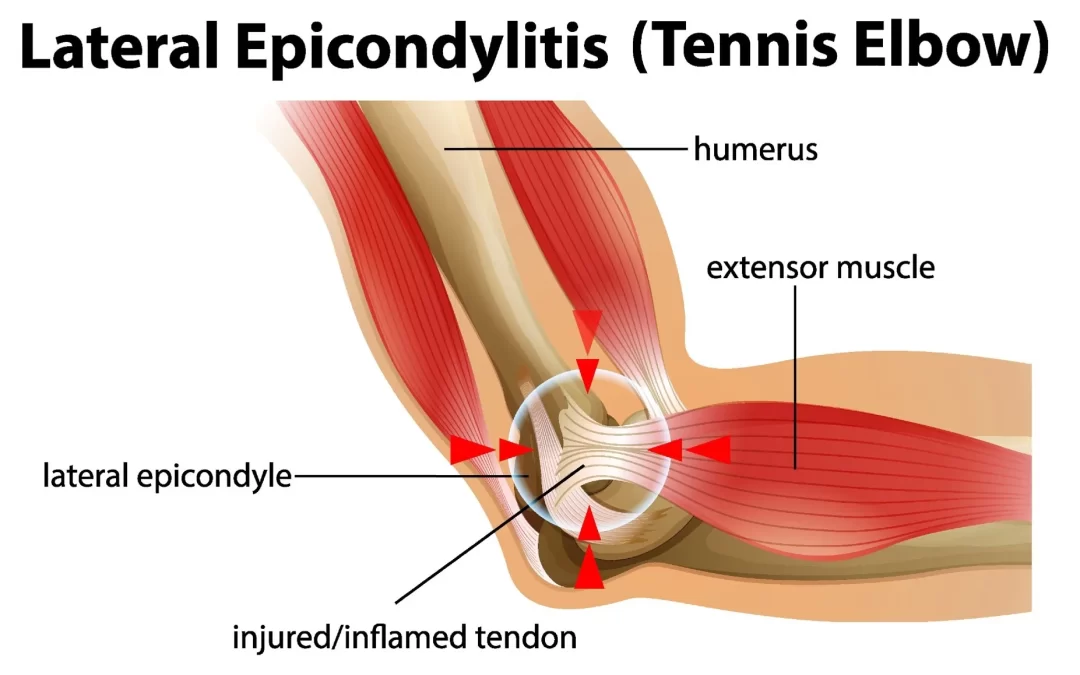Tennis elbow, also known as lateral epicondylitis, can be a debilitating condition that limits your ability to play sports, shake hands, open doors or even lift a cup of coffee.
 Tennis elbow (TE) is a form of tendinitis. It causes inflammation and micro-tearing of the extensor tendons of your forearm. These tendons are thick bands of connective tissue that attach muscles to bones. They have less blood supply than muscles and are thus more prone to injury.
Tennis elbow (TE) is a form of tendinitis. It causes inflammation and micro-tearing of the extensor tendons of your forearm. These tendons are thick bands of connective tissue that attach muscles to bones. They have less blood supply than muscles and are thus more prone to injury.
Despite popular belief, tennis elbow is not common amongst tennis players. In fact, in my 6 years on the pro circuit I only saw one instance of it. As therapists, we find more cases of TE in chefs, carpenters and painters.
Over the last 6 months on Samui, however, I have found that the vibration and hardness of the padel racket seems to cause more stress to the elbow than the bounce and spring of a ball hitting a tennis racket. Because padel is new to so many people, and because it’s so addictive and fun (Padel is life, right?) many people are developing this issue and needing to take time off from the sport.

But there are many solutions.
An injury occurs when the load placed on the tissue is greater than the tissue’s capacity to handle it. A sprinter tears their hamstring when they try to run faster than their muscles will allow. A weightlifter herniates a disc when their back muscles can’t hold the weight they’re attempting to lift. A racquet sport athlete gets tennis elbow when the repeated force applied to the elbow overpowers the muscles ability to absorb it.
 The key to recovery lies not only in healing the damaged tissue, but in strengthening the ones around it. For TE, this means doing exercises to stabilize the shoulder and wrist. As you can see, the elbow is just the mid point between shoulder muscles like the rhomboids and traps and those of the wrist. Based on kinematics, or the geometry of motion in the body, a weakness in one area will have an impact on a surrounding area as well.
The key to recovery lies not only in healing the damaged tissue, but in strengthening the ones around it. For TE, this means doing exercises to stabilize the shoulder and wrist. As you can see, the elbow is just the mid point between shoulder muscles like the rhomboids and traps and those of the wrist. Based on kinematics, or the geometry of motion in the body, a weakness in one area will have an impact on a surrounding area as well.
When rehabbing from acute TE, there are four aspects that must be applied immediately.
- Rest
- Massage
- Stretching
- Isometric strengthening
Rest: To recover, we have to give the tendons and muscles a break. For some people that’s months, for others its days. Everyone is different and the time needed depends on the severity of the injury.
Massage is proven to help stimulate satellite cells, fibroblasts and macrophages. These are particular types of regenerative tissue cells that lay dormant in our muscles. These cells increase waste removal and speed up the healing capacity of the tissue.
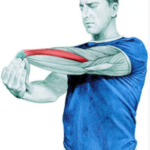 Stretching of the extensor muscles will bring blood flow to the tissues and act as an analgesia for pain. Ice can do this too but is also known to slow down the healing process of the tissue. If you do choose to ice, make sure you stretch and massage the area as well to assure the tissues continue to get the proper nutrients.
Stretching of the extensor muscles will bring blood flow to the tissues and act as an analgesia for pain. Ice can do this too but is also known to slow down the healing process of the tissue. If you do choose to ice, make sure you stretch and massage the area as well to assure the tissues continue to get the proper nutrients.
Isometric strengthening involves a sustained contraction against an immovable force. This contraction does not produce a change in length of the involved muscle group. A great example of an isometric is plank pose. The arms are outstretched, the legs are fixed and the abdomen is engaged. There is no shortening or lengthening of the muscles yet they are all active and strengthening.
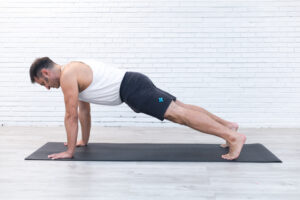
Isometrics are necessary after an injury because they are performed with minimal movement to the joint and thus reduce the risk of exacerbating the injury. Since concentric and eccentric contraction (normal muscle shortening and lengthening when a muscle is used) produce a shearing effect on joints, isometrics can be optimally used to aid in promoting the recovery process.
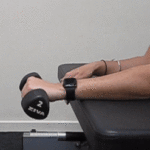 An example of an isometric for the extensors of the forearm is pictured on the right. The wrist is in extension with a small weight held as long as comfortable. No motion should take place. You should not lift and lower the weight. The studies show that a total of 4 minutes a day is the most effective amount of time to heal from a tendon injury. It doesn’t matter if you do 4 sets of 1 minute or 8 sets of 30 seconds. The most important thing is that 4 minutes total is achieved per day.
An example of an isometric for the extensors of the forearm is pictured on the right. The wrist is in extension with a small weight held as long as comfortable. No motion should take place. You should not lift and lower the weight. The studies show that a total of 4 minutes a day is the most effective amount of time to heal from a tendon injury. It doesn’t matter if you do 4 sets of 1 minute or 8 sets of 30 seconds. The most important thing is that 4 minutes total is achieved per day.
In addition to the above, Kinesiotaping is incredibly helpful in reducing pain and increasing grip strength. If you can’t get taped, even those tennis elbow bands can work.
Once you’re out of the acute phase, specific strengthening for the shoulder muscles and wrist is necessary. The focus should be primarily on the supraspinatus in the rotator cuff, deltoids, rhomboids, traps and pecs. These are all key players in shoulder and elbow injures. Wrist flexion and extension drills with weight can be applied as long they’re not painful.
And as always, whenever an injury occurs, you don’t have to go at it alone. Seek out an educated physio, chiro, massage therapist or osteopath for support. And if you’re on Koh Samui, I’m here to help. https://joryserota.com/nkt-samui/
